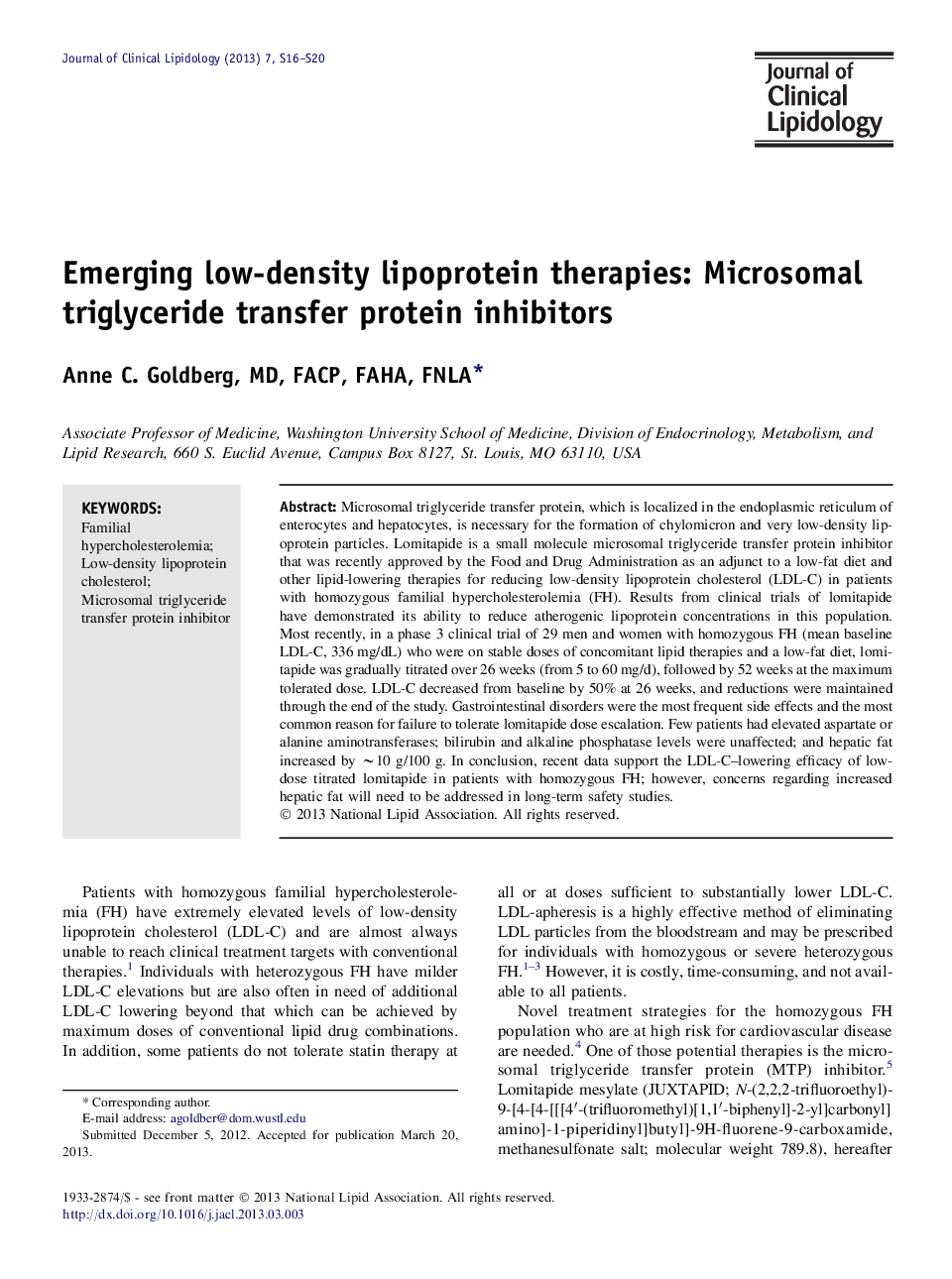| Article ID | Journal | Published Year | Pages | File Type |
|---|---|---|---|---|
| 5986073 | Journal of Clinical Lipidology | 2013 | 5 Pages |
Microsomal triglyceride transfer protein, which is localized in the endoplasmic reticulum of enterocytes and hepatocytes, is necessary for the formation of chylomicron and very low-density lipoprotein particles. Lomitapide is a small molecule microsomal triglyceride transfer protein inhibitor that was recently approved by the Food and Drug Administration as an adjunct to a low-fat diet and other lipid-lowering therapies for reducing low-density lipoprotein cholesterol (LDL-C) in patients with homozygous familial hypercholesterolemia (FH). Results from clinical trials of lomitapide have demonstrated its ability to reduce atherogenic lipoprotein concentrations in this population. Most recently, in a phase 3 clinical trial of 29 men and women with homozygous FH (mean baseline LDL-C, 336 mg/dL) who were on stable doses of concomitant lipid therapies and a low-fat diet, lomitapide was gradually titrated over 26 weeks (from 5 to 60 mg/d), followed by 52 weeks at the maximum tolerated dose. LDL-C decreased from baseline by 50% at 26 weeks, and reductions were maintained through the end of the study. Gastrointestinal disorders were the most frequent side effects and the most common reason for failure to tolerate lomitapide dose escalation. Few patients had elevated aspartate or alanine aminotransferases; bilirubin and alkaline phosphatase levels were unaffected; and hepatic fat increased by â¼10 g/100 g. In conclusion, recent data support the LDL-C-lowering efficacy of low-dose titrated lomitapide in patients with homozygous FH; however, concerns regarding increased hepatic fat will need to be addressed in long-term safety studies.
